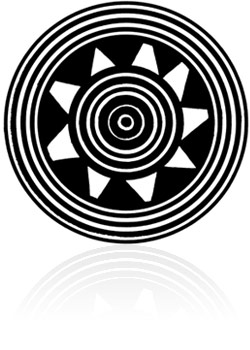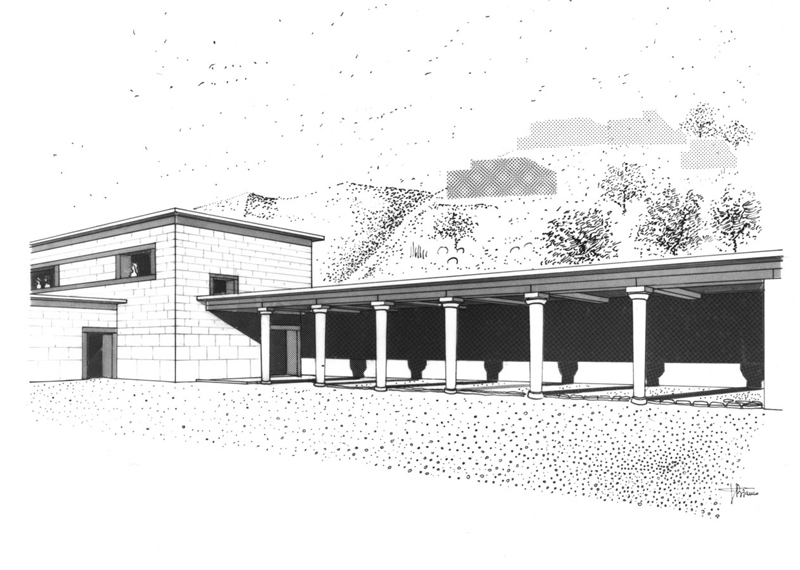CHART CHRONOLOGY OF ANCIENT MINOAN AND GREEK KOMMOS
This is also available from it's orginal source from J. Shaw's Book which can be accessed and purchased on books.Google.com
For the post-Neolithic, “Minoan” period, we use the system proposed by Arthur Evans. He divided the period into three phases (Early, Middle, Late Minoan) with numerical subdivisions (e.g., Late Minoan III [LM III]) that can be further subdivided (e.g., LM IIIA). Th e sub-periods correspond roughly with changing ceramic form and decoration that can often be linked to architectural changes on sites. We occasionally refer to the times of the emergence of the Minoan palaces (MM IB–MM II) and their renewal (from MM III–LM I) as Protopalatial and Neopalatial, respectively.
- 3500–2000 B.C. Late Neolithic-Early Minoan Periods. At Kommos, only sparse occupation.
- 900–700 B.C. Middle Minoan IB–II Periods, Protopalatial Period. The Kommos town spreads. The first large civic building (AA) is founded and later destroyed, perhaps by earthquake, at the end of the period.
- 700–425 B.C. Middle Minoan III–Late Minoan I Periods, Neopalatial Period. Kommos town expands. Building T is constructed at the beginning of the period, but gradually falls into disuse while life continues in the town.
- 425–375 B.C. Late Minoan II–IIIA Periods, Continued occupation. Destruction of Knossos in northern Crete at end of period.
- 375–200 B.C. Late Minoan IIIA2–IIIB Periods. A regional Mesara revival in LM IIIA2 brings about the construction of massive Building P, later abandoned along with the town. Late Minoan IIIC–Subminoan Periods. The Kommos site lies unoccupied, but at the end of the period the fi rst Greek temple (A) is founded above Minoan Building T.
- 200–600 B.C. Subminoan–Greek Geometric/Orientalizing Periods. Temple B is founded above Temple A around 800 B.C. Building Q is built later. After a period of intense use, the sanctuary is largely abandoned at end of period.
- 600–400 B.C. Archaic/Classical Periods. Limited use. An outdoor shrine with a single built altar (H) and a building (F) of uncertain use.
- 400–30 B.C. Late Classical and Hellenistic Periods. Rejuvenation of the Greek sanctuary with the founding of Temple C above Temple B, followed by the building of numerous other structures (A, B, D, E, W), and altars (C,L,M).
- 30 B.C. –A.D. Roman. Limited use followed by desertion of the site.


An earnest beginning!
The excavation of the Minoan harbor-side town of Kommos, by Joseph and Maria Shaw, in association with the University of Toronto and under the auspices of the A.S.C.S.A., began in earnest in 1976.
Progress, Brilliant Discoveries!
Thereafter, in Three Distinct Areas wonderful discoveries were made, including a Minoan Palace containing a Stoa (see image below for a representation) and a probable series of Shipsheds for the Minoan Southern Fleet.
Understanding the magnitude of this ancient uncovered evidence.
Above these structures, but still in the southern Area, Greek Temples with artifactual finds from Geometric, Archaic, Classical and Hellenistic Periods were discovered and later adapted by the Phoenicians, from Palestine. Finally, it was discovered, there was Roman Period utilization of the southern portion of the site. Evidence from over a two-thousand year span has been excavated, extensively analyzed and published (see: Bibliography) in conjunction with renowned scholars in a variety of specialized fields of study.
Progress towards a cause.
A water line was brought down by the local municipality of Pitsidia and Tamarask trees were encourage to grow just inside the fence line further augmenting the palm frond-wind-barrier (1998 Plan Section II). Clairy Palyvou, a Conservation Architect and Educator, was retained to develop scarp and archaic wall stabilization plans (1998 Plan Section III) that were carried out by conservation contractor Costas Nikakis.
 The ‘North’ Stoa, along the north side of the Central Court, like that facing it on the south, was supported by six columns. It sheltered members of groups that used the court for communal displays and other activities. Its back wall and much of its floor were decorated with colored and spiral frescos. Because of later building during both Minoan and Greek periods, much of its structure is masked by later walls.
The ‘North’ Stoa, along the north side of the Central Court, like that facing it on the south, was supported by six columns. It sheltered members of groups that used the court for communal displays and other activities. Its back wall and much of its floor were decorated with colored and spiral frescos. Because of later building during both Minoan and Greek periods, much of its structure is masked by later walls. The pottery kiln, with its dome cut back to reveal firing chamber and channels, within the South Stoa of Building T. The kiln was built against and over the back wall of the stoa, of which two column bases can be seen. The potter is at work with his wheel as he forms vases to be fired. To his right is heaped up brush used to fire the kiln.
The pottery kiln, with its dome cut back to reveal firing chamber and channels, within the South Stoa of Building T. The kiln was built against and over the back wall of the stoa, of which two column bases can be seen. The potter is at work with his wheel as he forms vases to be fired. To his right is heaped up brush used to fire the kiln.Concern for the Future!
In 2005 James Stratis revisited the site June-July and produced a Resurvey and Plan Update.
Plans are made.
Professor Palyvou was once again contracted in June, 2006 to produce roof shelter designs to protect the fragile pottery kiln (see image about) built within the stoa and the Greek Temple area. Palyvou worked in partnership with Sonia Mavrommatti an Athens based conservation architect/ engineer to produce design development plans, specifications and budget. These were finalized in January 2007.
The future is now.
It is time for a new chapter of stewardship, for this sacred place, in early 2007, the non-profit organization, Kommos Conservancy Inc. was established in to seek funding and further implement the proposed Conservation of the site and provide Interpretation and Development for Visitation/Education. Ultimately a maintenance endowment will need to be established, as the Greek government is unable to meet all the needs associated with their stunning and overwhelming historical legacy.
For information on how you can contribute, click here.





